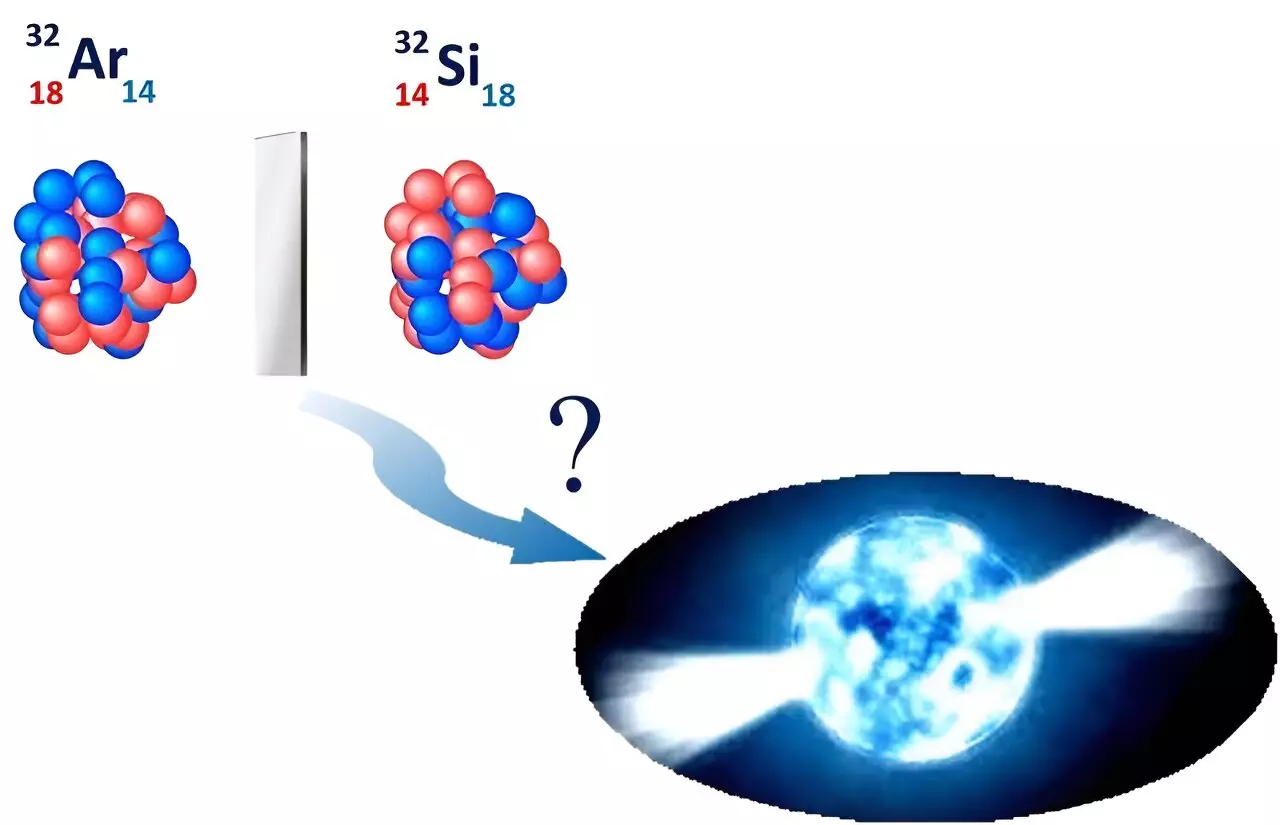The size of an atomic nucleus can be altered by adding or removing neutrons, resulting in changes in the energy levels of the atom’s electrons known as isotope shifts. By making precise measurements of these energy shifts, scientists are able to determine the radius of the nucleus of an isotope. In a recent study, researchers conducted laser-assisted measurements of the nuclear radii of stable and unstable silicon isotopes, including silicon-28, silicon-29, silicon-30, and the unstable silicon-32 nucleus.
The researchers compared the radius of the silicon-32 nucleus with its mirror nucleus, argon-32, to better understand variables that are crucial in describing the physics of astrophysical objects like neutron stars. These measurements provide valuable insights into nuclear theory and the study of nuclei and their components.
Despite advancements in nuclear theory, scientists continue to face challenges in understanding the intricacies of nuclei. One notable challenge is linking the description of nuclear size with the fundamental theory of the strong nuclear force. Additionally, there is uncertainty around whether the nuclear theories used to describe finite atomic nuclei can accurately portray nuclear matter – a unique form of matter composed of interacting protons and neutrons, including matter found in extreme conditions like neutron stars.
Precision measurements of charge radii, which determine the radius of atomic nuclei, play a crucial role in tackling these unresolved questions in nuclear physics. Researchers at the BEam COoler and LAser spectroscopy facility (BECOLA) at the Facility for Rare Isotope Beams (FRIB) at Michigan State University used laser spectroscopy to measure the nuclear radius of different silicon isotopes, providing a significant benchmark for the advancement of nuclear theory.
The comparison between the silicon-32 nucleus and its mirror nucleus, argon-32, allowed scientists to set constraints on parameters essential for understanding the properties of dense neutron matter within neutron stars. These results not only align with constraints from gravitational wave observations but also complement other observables, reinforcing the importance of nuclear radius measurements in advancing nuclear theory and our understanding of astrophysical phenomena.


Leave a Reply